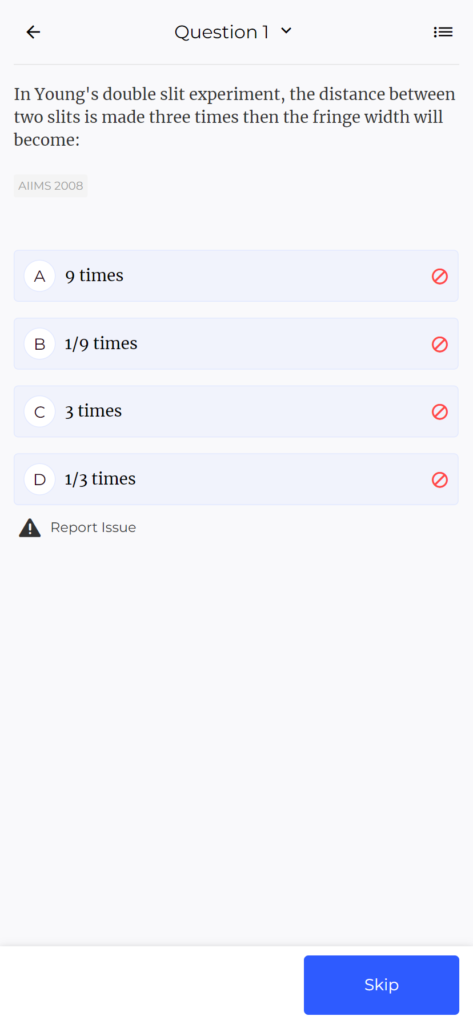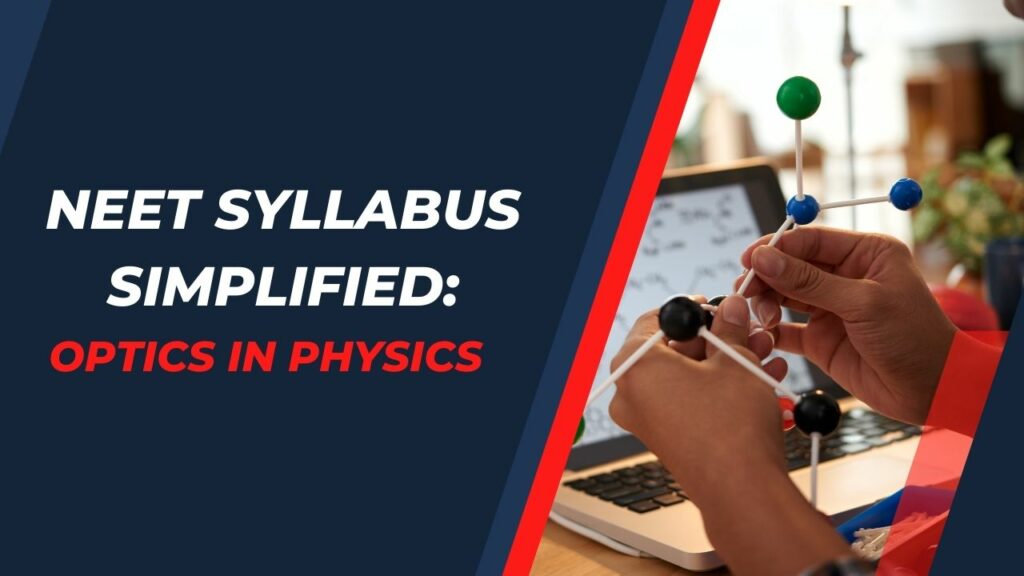Physics takes center stage in the NEET 2026 examination, holding the key to the dreams of future medical professionals. Among its various chapters, optics shines as a crucial area, helping us understand light and its mysteries. But here's the catch – even though optics carry 7% weightage in NEET, many aspirants shy away from this section. The complex concepts, tricky math, and puzzling phenomena make it a bit of a fearful topic. However, avoiding it won't make it go away. Just like facing any challenge, the only way out is through. In this article, we've taken apart this important topic and explained it in a way that's easy for you to understand.
Basics of optics:
As you are aware of it by now, optics is all about understanding light – how it's a type of energy that travels in waves, similar to ripples in a pond. These waves come in different colors based on how often they go up and down, which we call frequency. The more frequently they wiggle, the shorter the distance between each wave, and the brighter and more powerful the light becomes.
Before tackling the complex parts of optics, it's really important for NEET aspirants to get the basics down. Start by picturing light as these wavy energy packets and get to know the key ideas of reflection (how light bounces off surfaces) and refraction (how it bends when it goes through things like glass). These are the foundation stones of how light works, just like building blocks for optical science.
Reflection:
Think of light as a bouncy ball hitting a wall and coming back to you. That's a reflection! When you look at yourself in a mirror, the mirror is reflecting light so you can see your reflection. But sometimes, light bounces off things in different ways. When you shine a flashlight on a rough surface, the light scatters all around, and you see it as a glow. That's called diffuse reflection. On a calm lake, you might see the trees and sky reflecting clearly – that's regular reflection.
Refraction:
Notice a straw in a glass of water, you will see it bent. This is just like what light does when it moves from air to water or other materials – it changes its path, which we call refraction. If you put a pencil partly into the water, you'll notice it seems to shift at the water's surface – that's refraction in action. Also, there's this interesting thing called Snell's Law that's like a guide. It helps us know how much illumination changes direction when it goes from air to water or other things. It's like knowing the rules for how a ball bounces when you throw it differently.
Lenses and mirrors:
Imagine lenses as eyeglasses that light wears to make things clearer. On the other hand, mirrors are the cool reflective surfaces that light uses to show us its dazzling tricks. There are two types: concave, which curves inward like a cozy nest, and convex, which curves outward like a friendly smile. Dive into ray diagrams, focal points, and magnification equations. Developing proficiency in these aspects will greatly enhance your answer-giving skills in the NEET physics paper.
Optical instruments:
An optical instrument is a tool that does two cool things: it makes pictures clearer or helps us learn more about light itself by looking at its tiny particles called photons. Some examples of these instruments can be microscopes and telescopes. Microscopes are like super zoomers that show you teeny-tiny things, while telescopes act like time-travelers, helping you see far-off stars and planets. By understanding how these devices work, you'll understand the concepts better and stand out in the crowd!
Wave optics:
In this portion, you'll learn about things like how light spreads out when it meets obstacles (called diffraction), and how light waves move in certain directions (called polarization). Also, delve into the various experiments like Young's double-slit experiment, which shows how light waves play with each other.

Optical phenomena:
Illumination creates wonders like scattering, where it scatters in different directions, interference, where light waves mix together to make patterns, and diffraction, where light bends around corners. These phenomena are everywhere in nature and technology. By understanding them, you'll be ready to tackle NEET questions that ask about these incredible light behaviors.
Few ways to excel in the optics section of NEET 2026
- Solving questions from previous years' NEET papers will help you understand the types of optical problems that are likely to appear.
- Create unlimited and customized mock tests with the ‘Build Your Workout” feature on Darwin. These practice tests will help to strengthen your understanding of any topic.
- Regularly use PrepDNA and EffortDNA to identify areas in optical physics where you need improvement and focus your efforts on those aspects.
- Comprehensive notes on Darwin assist in simplifying complex concepts, making tough questions as approachable as the simpler ones.
- Reattempt all the pending questions from the revisions tab. This habit will help you practice the incorrect answers often and improve your accuracy and speed.

-----------------------------------------------
Mastering optics within the NEET physics syllabus is a surefire way to bolster your confidence and performance in the exam. Remember, optics isn't just confined to textbooks – it mirrors your daily experiences. Think about how mirrors reflect your understanding, how sunlight scattering resembles real-life scenarios, and how vibrant colors echo dispersion. As you bridge the gap between theory and application, your problem-solving skills will get refined. Therefore, embrace optics not merely as a chapter but as an inseparable facet of your world, guiding you towards achieving your goals in the NEET 2026 exam.
